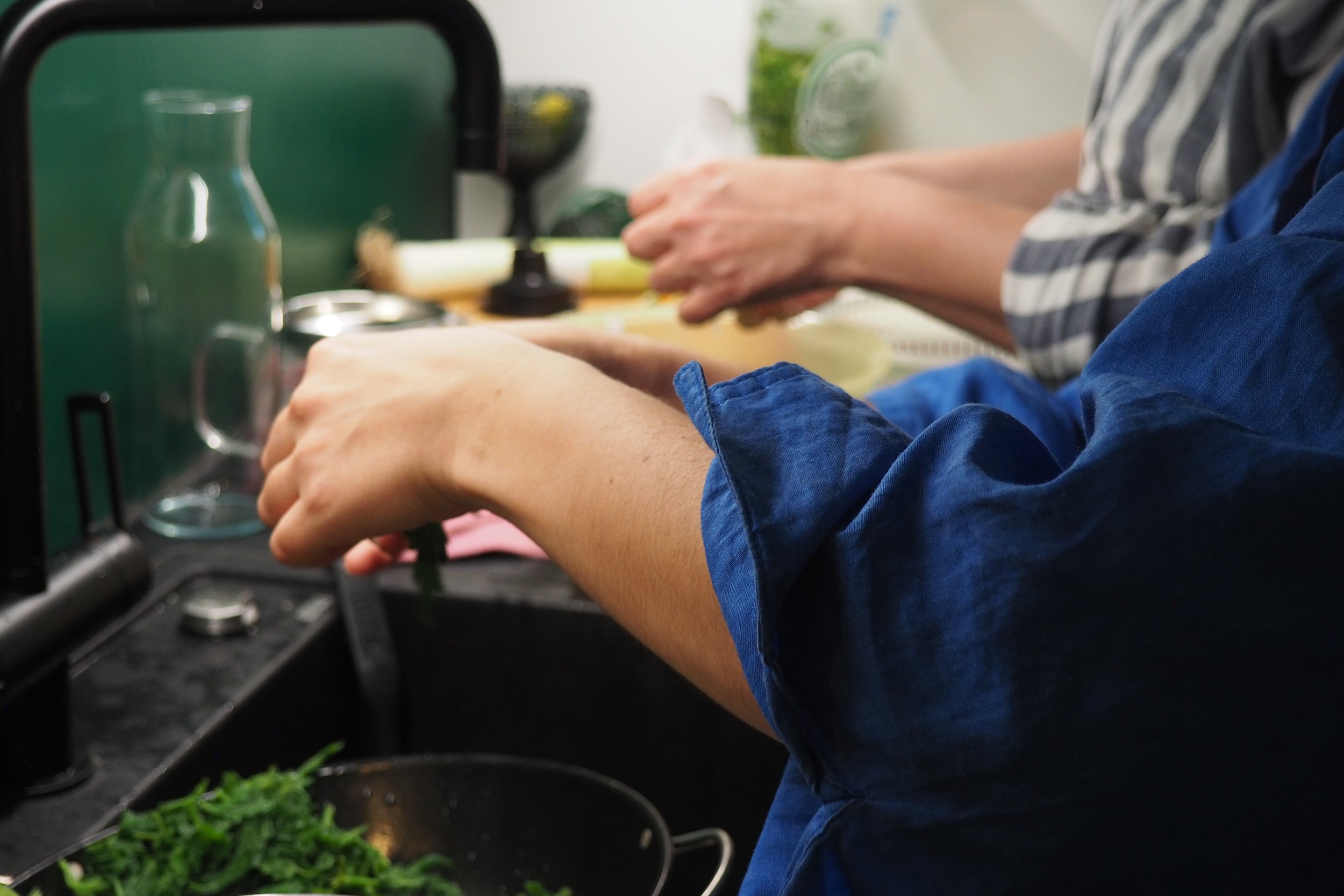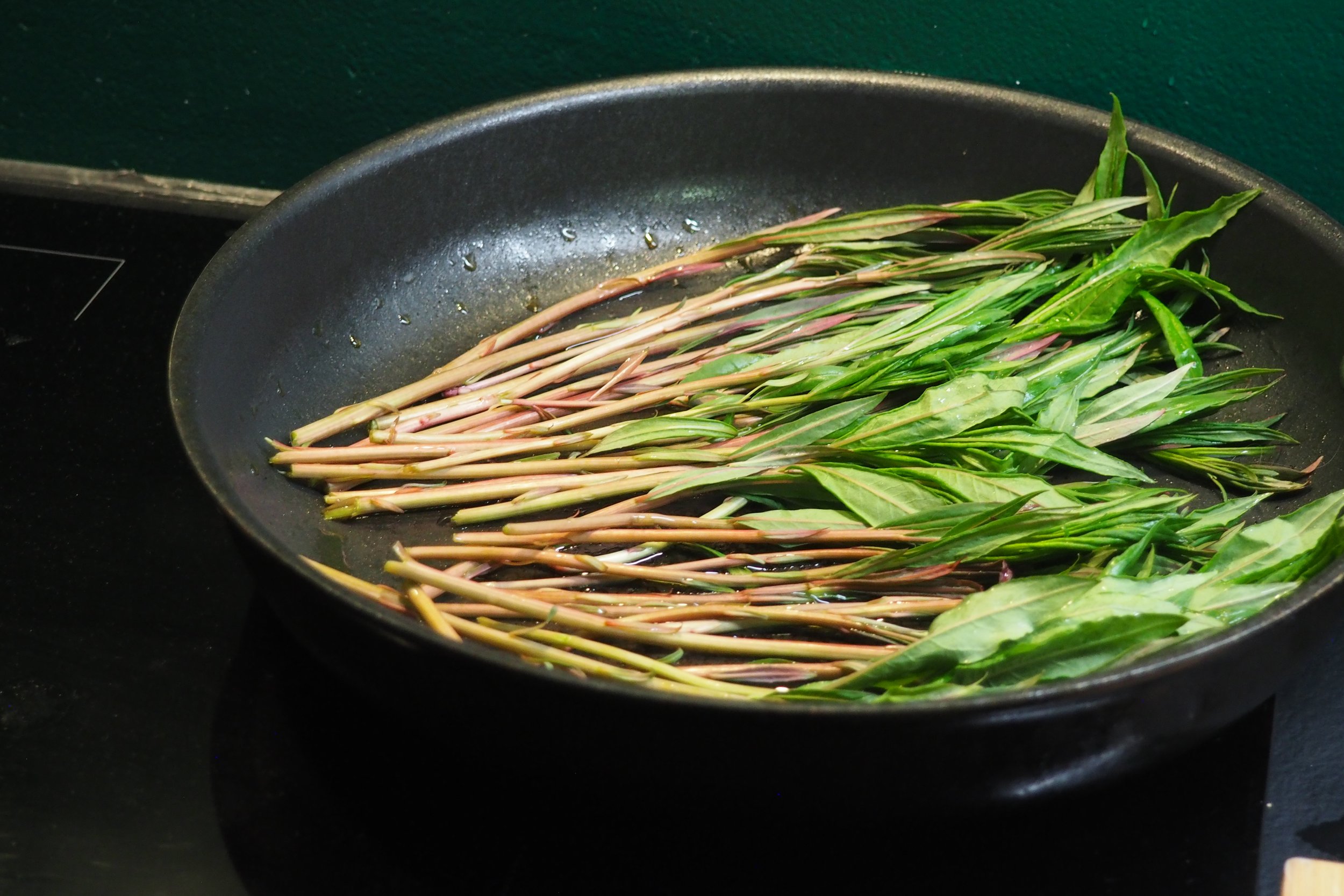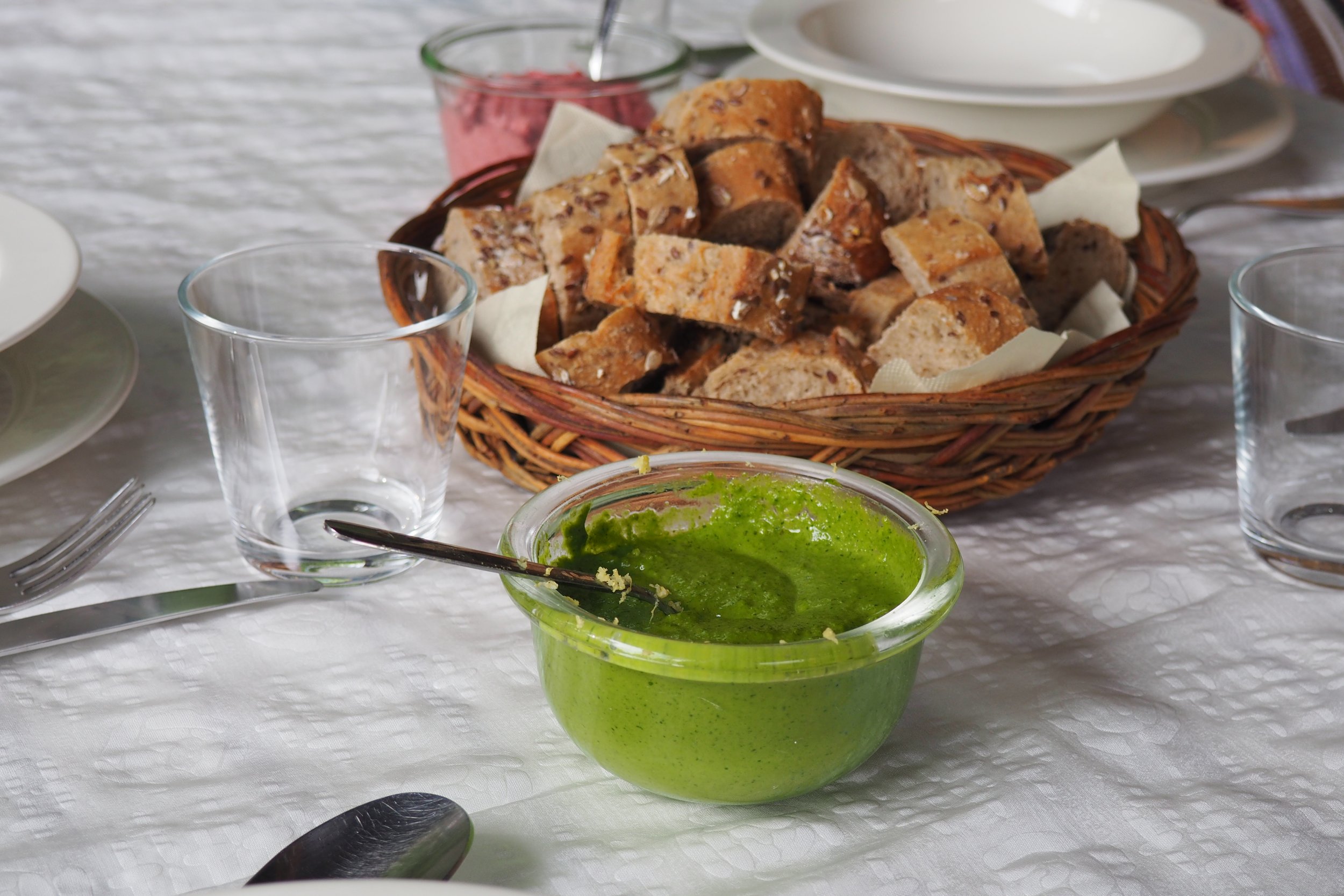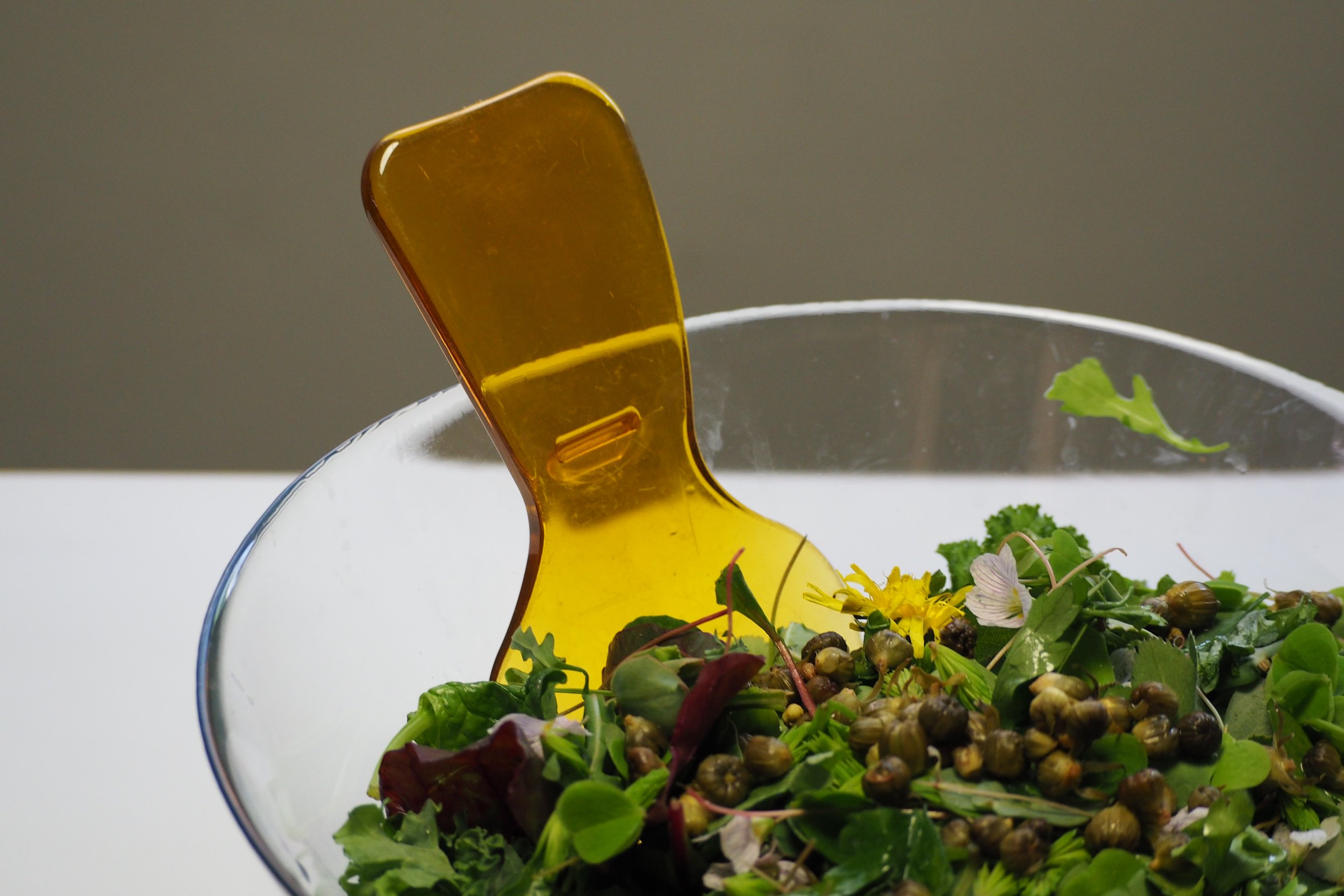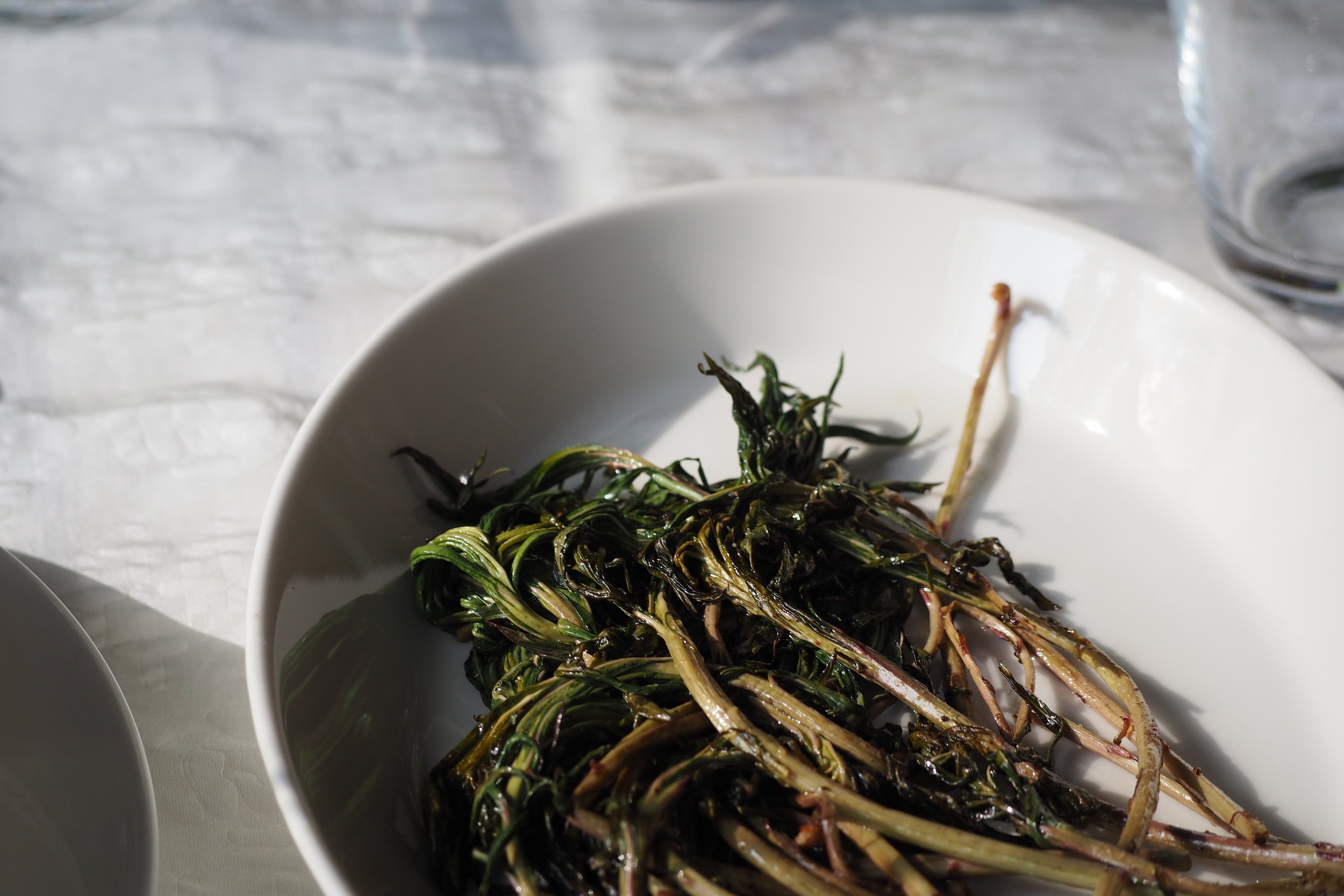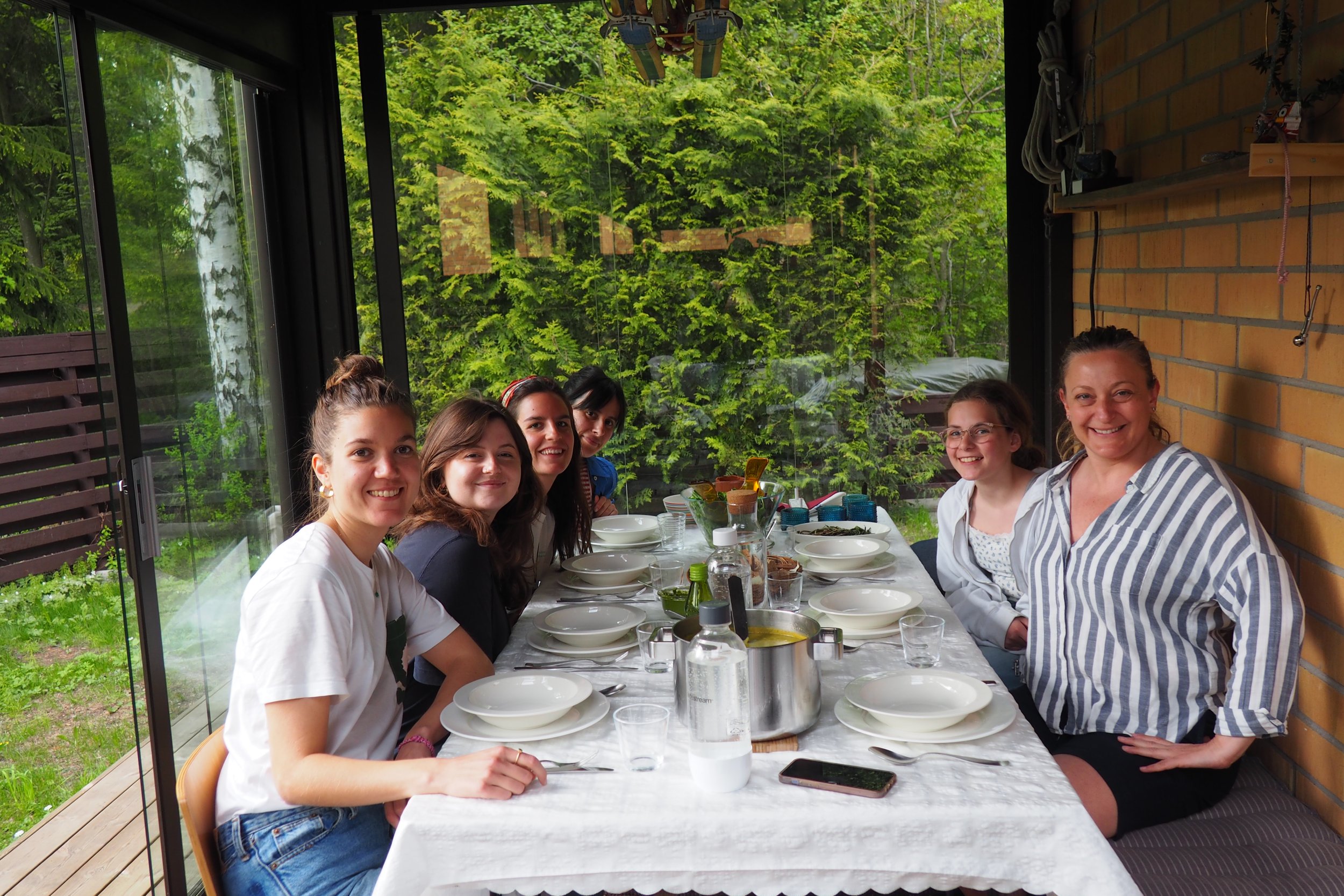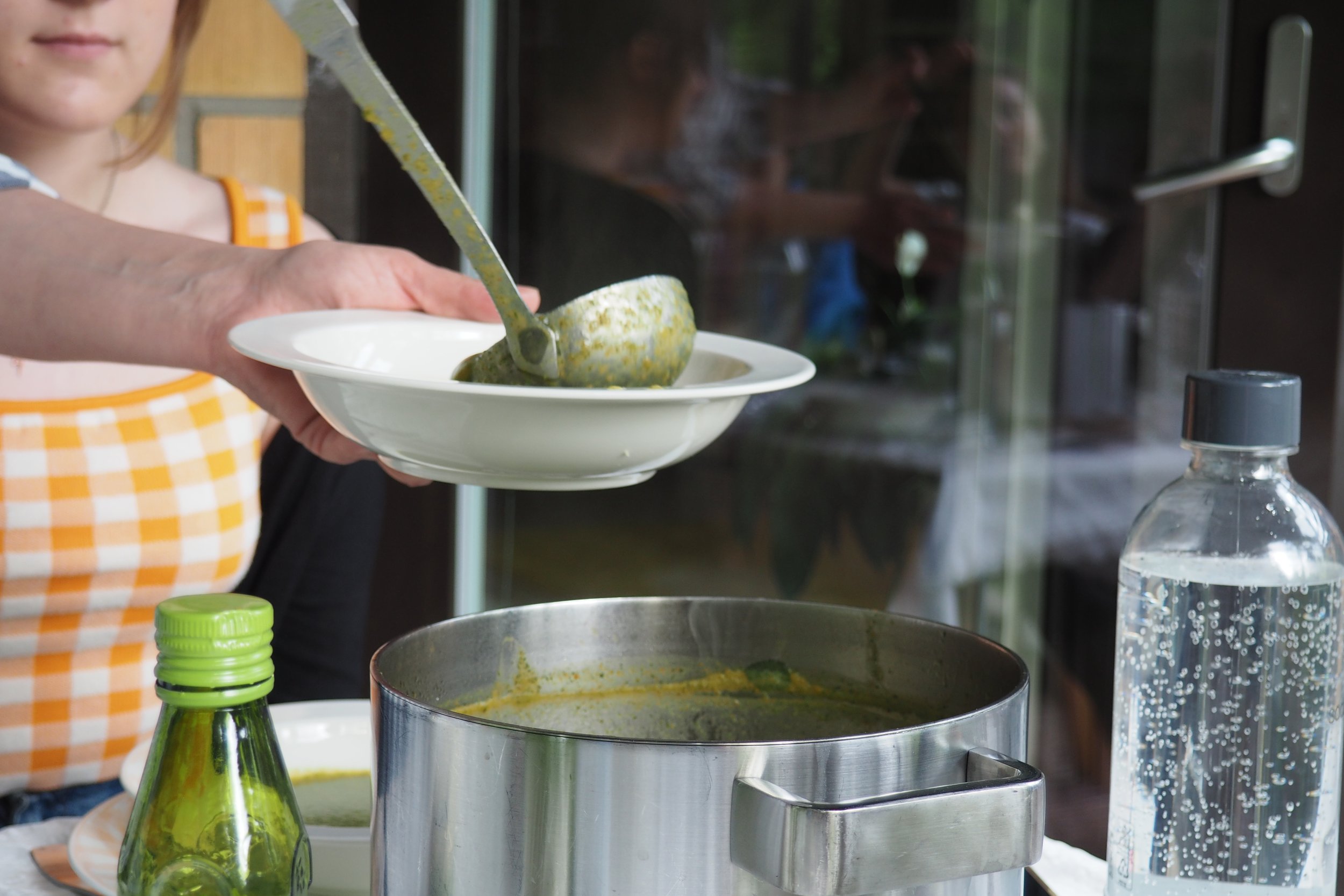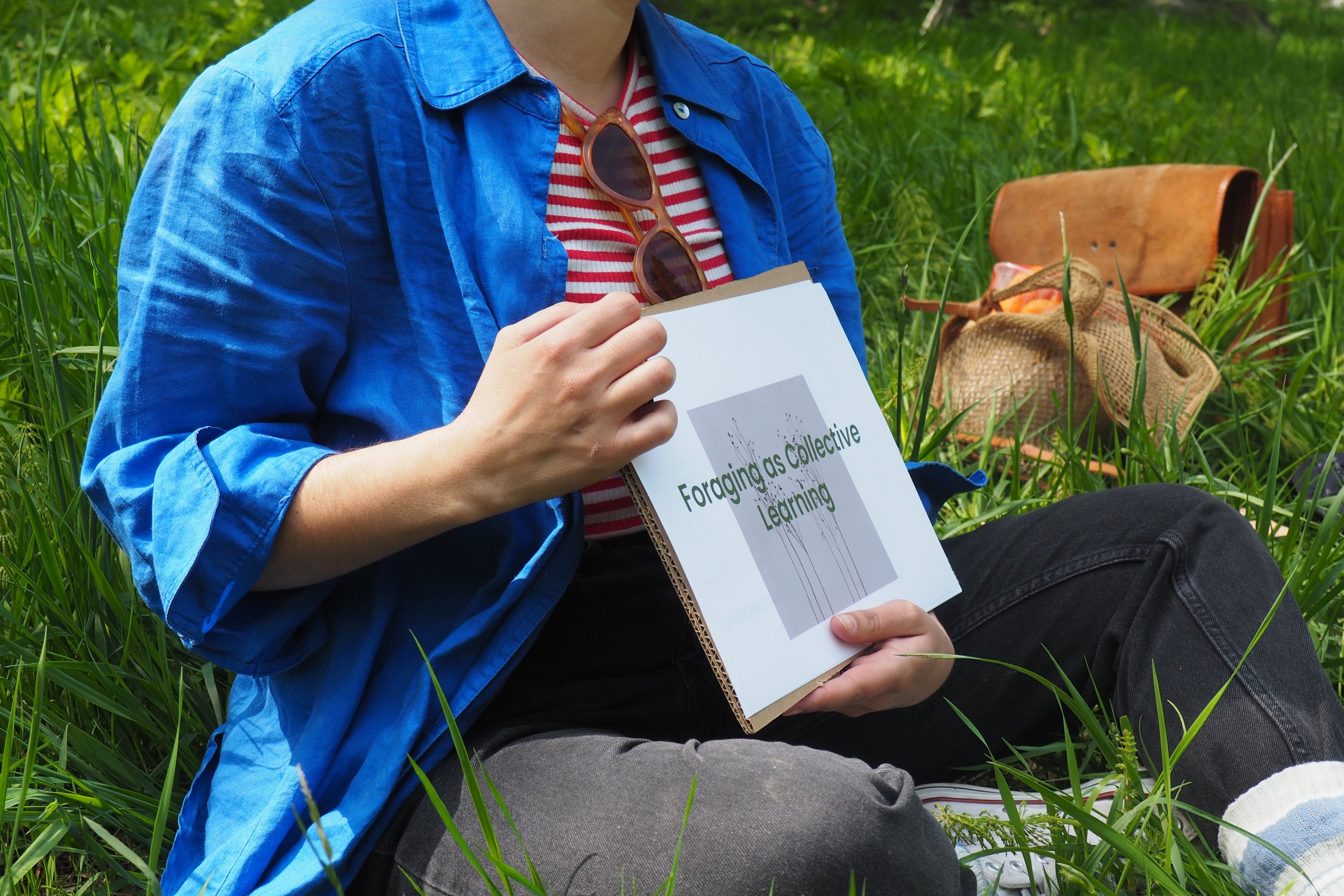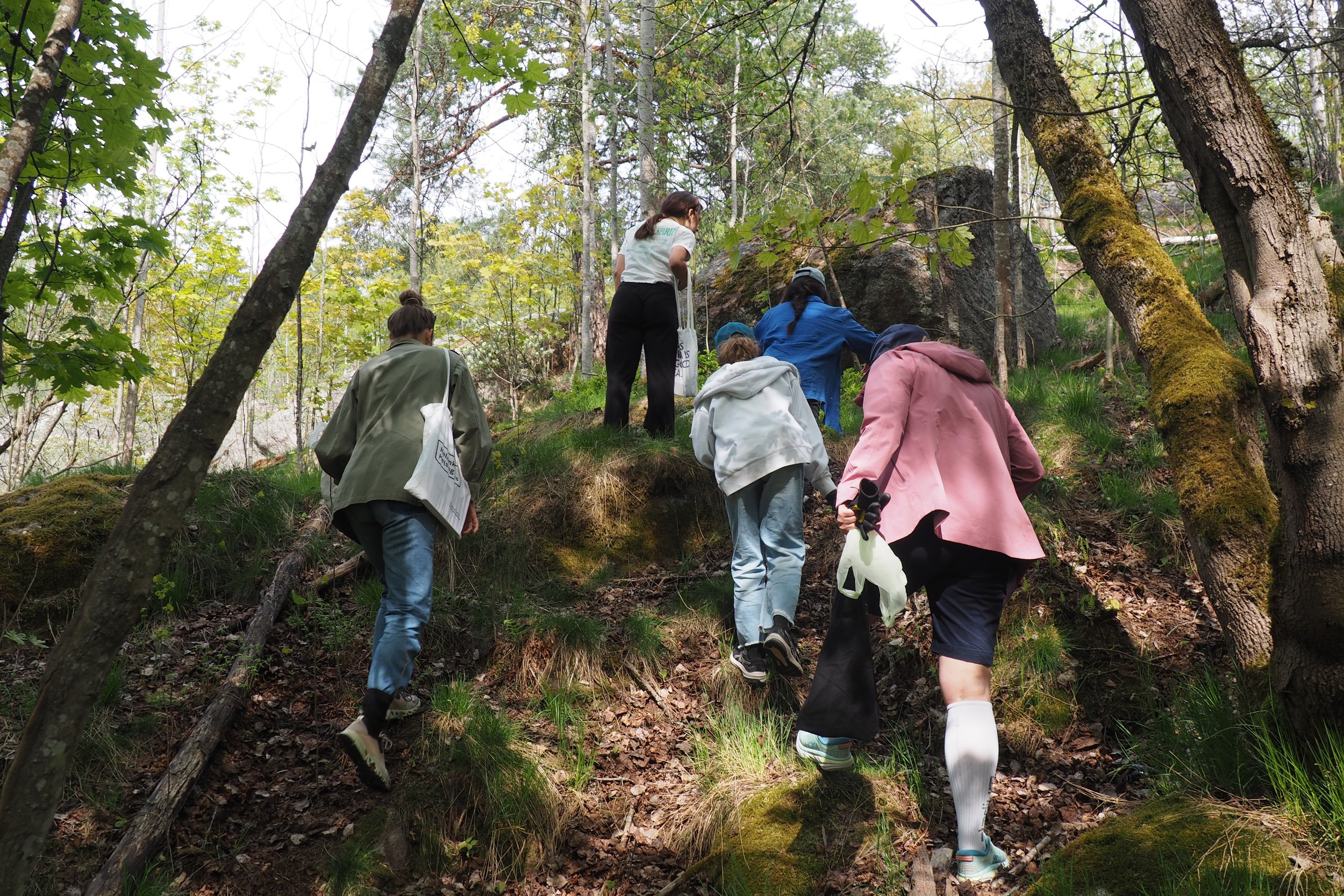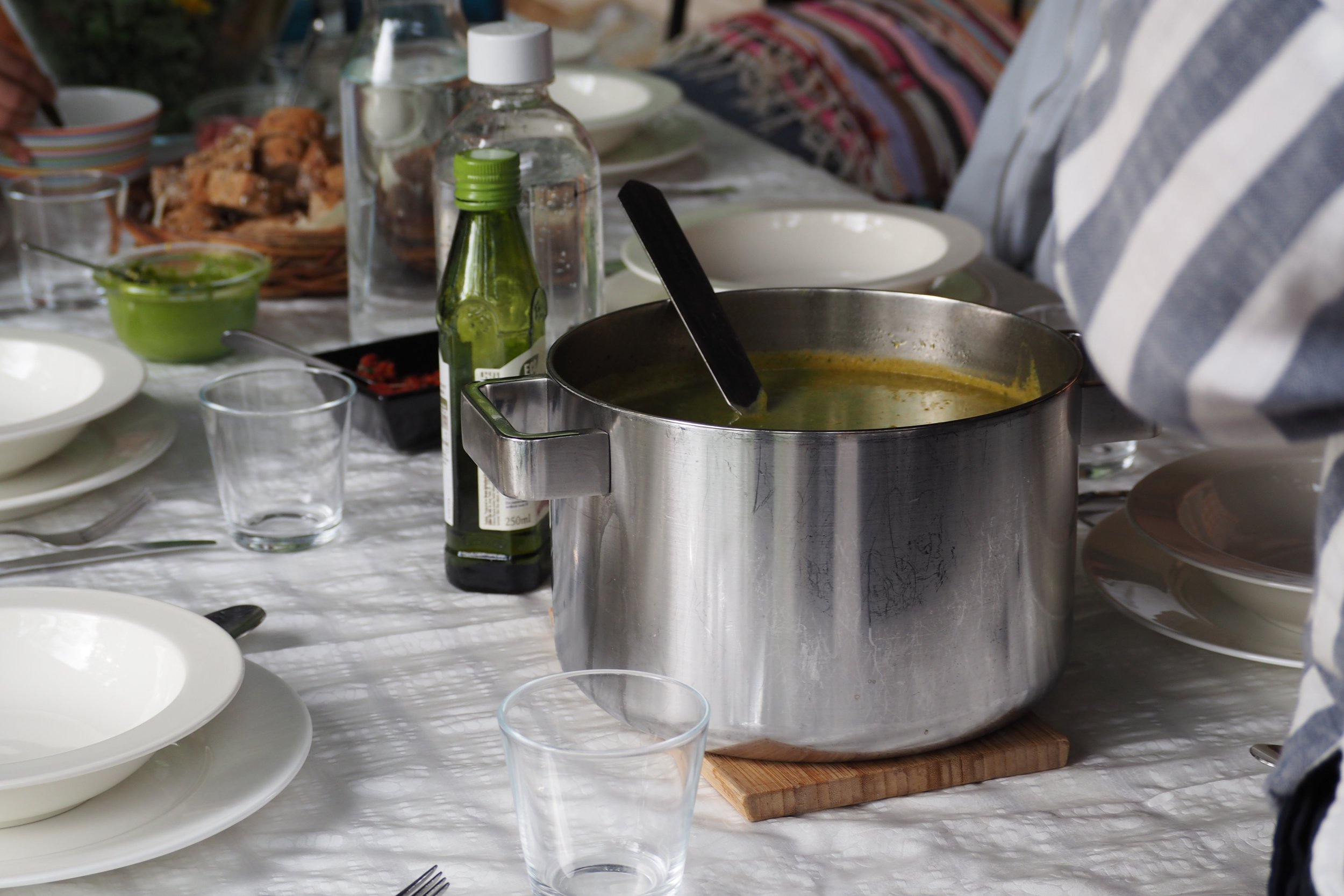Foraging as Collective Learning
By Andrea Gilly & Sara D’Angelo
To welcome spring we went foraging as a collective. Foraging is a great opportunity to go outside and look at the individual plants surrounding us, taking the time to see, understand and learn from them, and in the meantime, maybe learn something about ourselves too…
We recognize that our upbringing and education have unintentionally made us distance ourselves from “nature” –or rather, develop an understanding of nature, as something distant and different from us. Taking time to acknowledge our surroundings can be a radical, humbling act and an opportunity to ground ourselves by building roots in the land we inhabit.
Through foraging, we wanted to foster an environment of curiosity and reciprocity, helping us to find new ways of working and learning together. Our collective’s mission is to support companies’ transformation towards sustainable practices by designing experiences and introducing new tools to highlight more intuitive, collaborative, and regenerative knowledge. Nature Immersion and foraging are some of the toolboxes we are offering.
If you’re interested in learning more, you can directly schedule a 30-minute intro meeting with us through this link.
“To me, foraging has been an act of learning to recognize oneself through the surrounding more-than-humans; a way to learn to see nature differently from “the other”, to a fundamental part of life and the world. For me, learning from plants allows me to see systems and better understand reciprocity.”
Andrea
“I loved picking spruce sprouts from the trees, I have always bended down while foraging, now I was looking up. Their being so delicate and soft yet with a strong lemony flavour, found at the periphery of the tree branches and existing for limited time, evolving soon into another being.”
Sara
The plants we learned from
We divided our session in 3 parts: Grounding ourselves to our surroundings, recognizing our surroundings and preparing a meal together.
To ground ourselves, Sara guided us through a meditation, inviting everyone to land into both the space and our bodies by connecting with our breath and senses. The goal was to awaken us to the life within, underneath, surrounding and all over us.
Afterwards we spent some time learning about the plants we came to harvest and learn from, here is a list of the plants we found - click on each image to learn more about the plant. The sources for all our plant facts come from luontoporti/naturegate, a great source of knowledge for new foragers, and from the book Luonnon Kotiapteekki from Frantsila.
And remember! Only pick a plant you know. If you have never foraged, we suggest you join a foraging walk before picking yourself, if you are not able to identify the plants.
Reflections and learnings
1. Recognising our surroundings is a grounding act of connection
This allows us to form awareness and the latter is a prerequisite for inscribing relations and for potential care towards them. There are so many species surrounding us that we don't take the time to notice or recognize. However, when we do, we become aware and start to see individualities rather than homogeneous masses. Yet, there is a fear-based knowledge of plants that permeates cultures in different ways and that is visible in knowing only what we can’t eat rather than what we can.
How can we be caring as well as careful?
2. Our notion of usefulness is centred in industrialisation
We tend to think of other species in terms of what they can offer to us e.g nutrition and health and not as individual righteous subjects existing for their own survival.
How to righteously respect plants as they are, beyond their usefulness for humans?
3. Learning to be with and think with other species can be an act of wonder, curiosity and humility
In turn, this can lead to imagine more desirable and inclusive futures. We also see learning as an act of surrendering to the unknown, that requires listening and presence to receive wisdom in return, without control.
How can creative practices help us surrender and let go of our control?
Breaking the bread
After foraging we made a meal together and experienced the flavours of our local surroundings. This familiarity created a new connection for us, both with each other, and the land we inhabit. From the nettles and ground elder, we made a root vegetable soup. From the dandelions, we made a punchy pesto; and from our other ingredients we made a colourful, wild spring salad.
Wild Spring Salad from your surroundings:
Ingredients:
Pick a handful of each, or whichever of the list you are able to identify and find. You don't need much for amazing added flavour and nutrients. And remember, as foragers we should only pick what we can harvest and use
Kale, lettuce or a salad mix of your preference.
Dandelion leaves
Sorrel leaves and a few flowers for colour.
Lifelong leaves
Lady’s Mantle leaves
Spruce shoots
For the dressing:
Olive oil
Lemon juice
Salt
Preparation:
Clean the foraged leaves well with fresh cold water & make sure to separate any other plants which might have gotten into your foraged basket. Clean the rest of the salad and mix.
For the dressing, mix 3 tbsp olive oil with 2 tbsp lemon, add salt to your preference and mix in.
Serve & enjoy your local salad & the flavours of your natural surroundings.
Foraging as collective learning
We, Andrea and Sara, are grateful for the experience of holding a space for the collective members to be and learn from one another. With humility, we would like to thank everyone who showed up, the forest that held us together and the plants we foraged and cooked.
Curious to learn more or book a session of nature immersion with us? Book a call to chat with us, using the button below.
